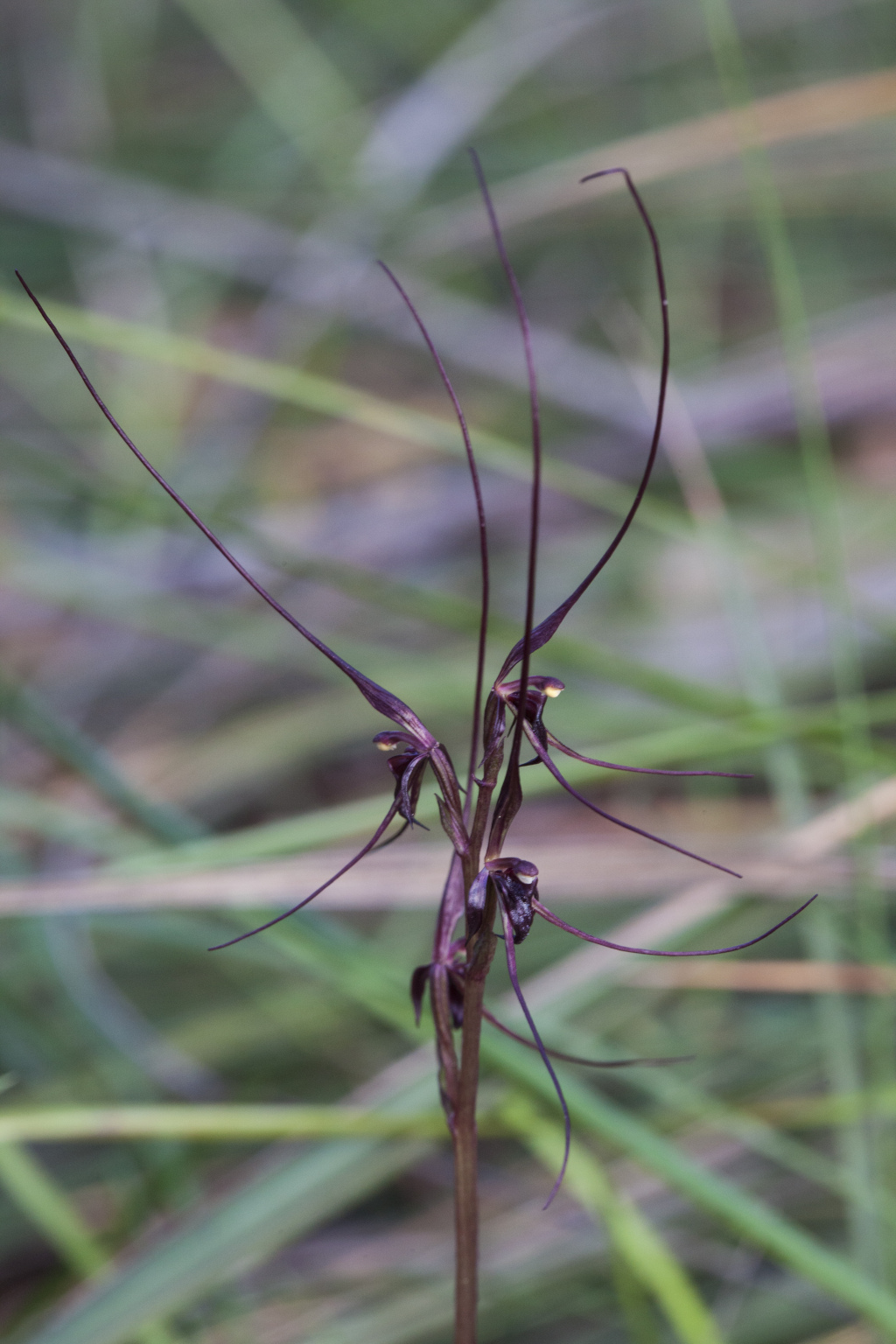Acianthus caudatus
R.Br. Mayfly OrchidFlowering plant 6–14 cm tall. Leaf cordate to ovate, thin, 7–33 mm long, 7–30 mm wide, green above, reddish-purple beneath, margins bluntly toothed, sometimes minutely. Flowers 1–6, dark purplish, often with musty odour; pedicel (including ovary) 4–10 mm long, subtended by small bract; dorsal sepal more or less inflexed, 20–45 mm long, base concave, dilating narrowly above column, then tapering to long fine point; lateral sepals much shorter than dorsal sepal, 12–25 mm long, tapering to fine points curving upwards at tips; petals reflexed or spreading, curved-lanceolate, relatively short, c. 5 mm long. Labellum recurved or curved downwards in upper part, sessile, elongate-ovate to triangular, 4–6 mm long, c. 3 mm wide; base erect, embracing column, tip deflexed; margins entire; callus with 2 erect basal glands and a narrow longitudinal channel. Column with very narrow wings on underside of almost terete lower two-thirds. Flowers Aug.–Oct.
GleP, VVP, VRiv, MuF, GipP, OtP, WaP, Gold, CVU, GGr, NIS, EGL, EGU, WPro, HSF, HNF, Strz, HFE, VAlp. Also SA, Qld, NSW, Tas. Scattered throughout southern Victoria, occurring in cool shaded positions in light forest but abundant only in sandy areas near-coast. An 1889 specimen from Boort represents the northernmost Victorian locality for the species and apparently it has not been collected from that vicinity since.
Entwisle, T.J. (1994). Orchidaceae. In: Walsh, N.G.; Entwisle, T.J., Flora of Victoria Vol. 2, Ferns and Allied Plants, Conifers and Monocotyledons, pp. 740–901. Inkata Press, Melbourne.
 Spinning
Spinning


